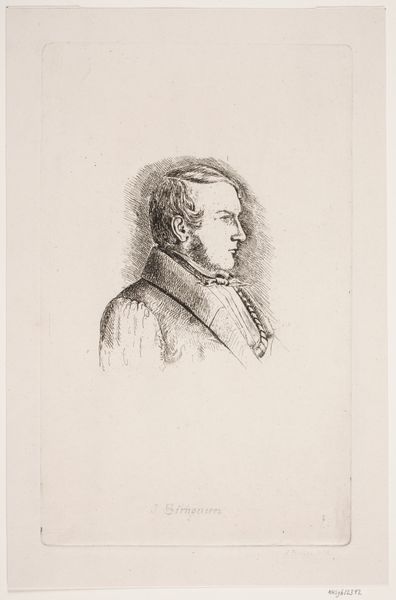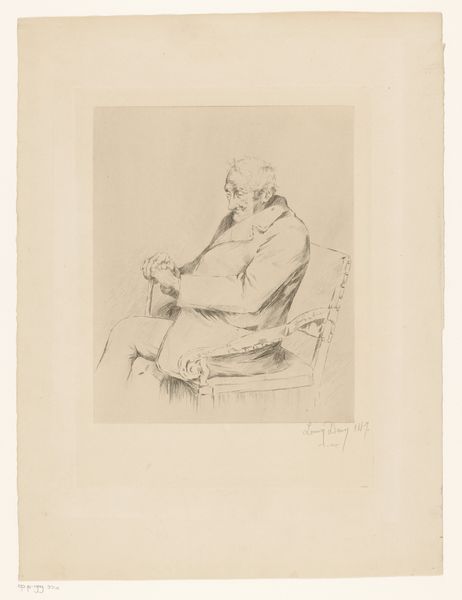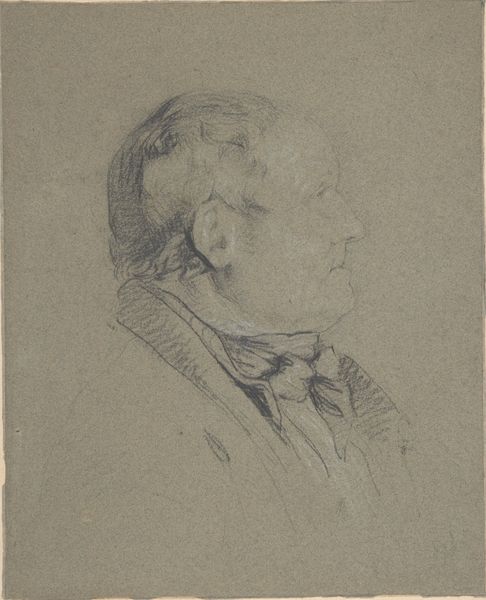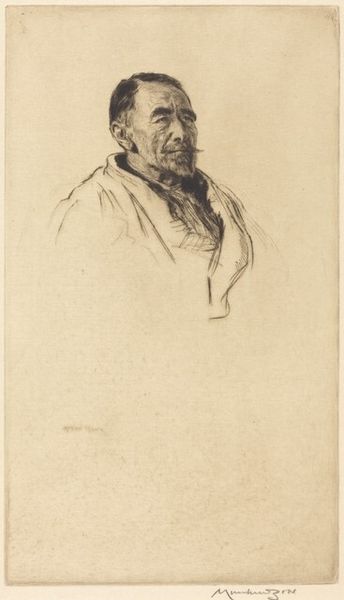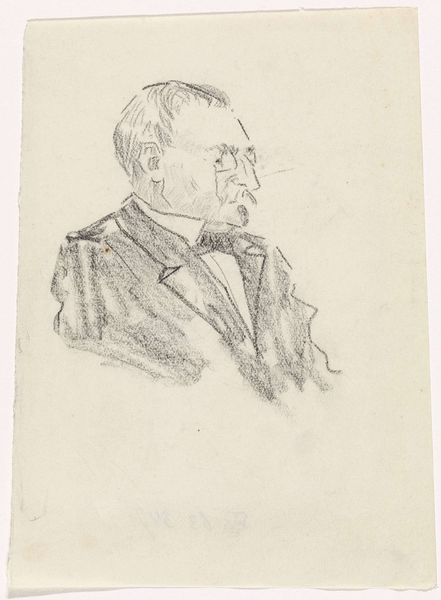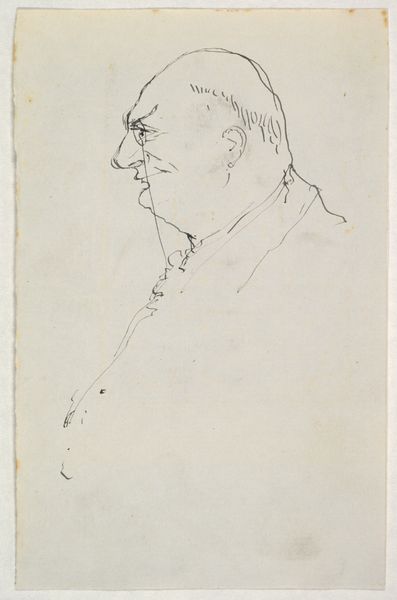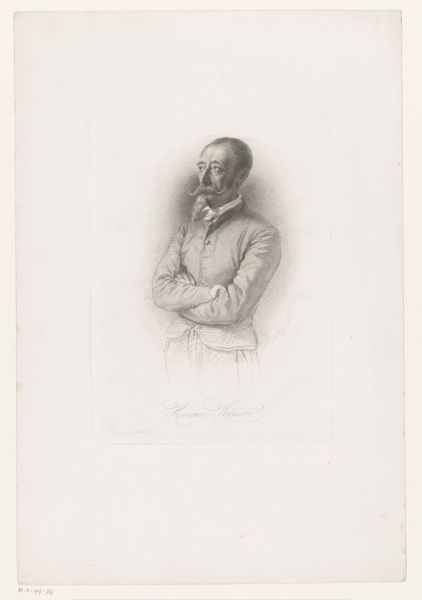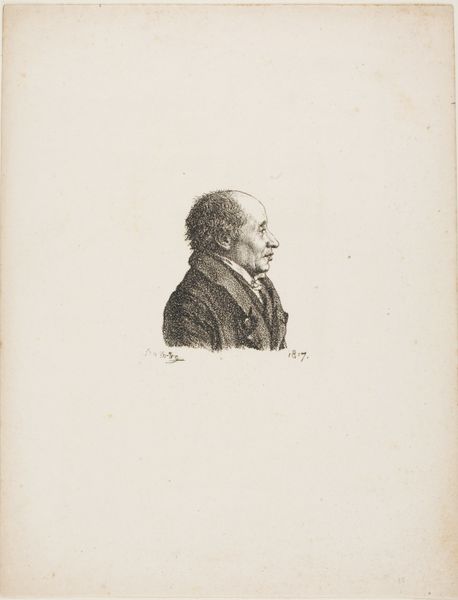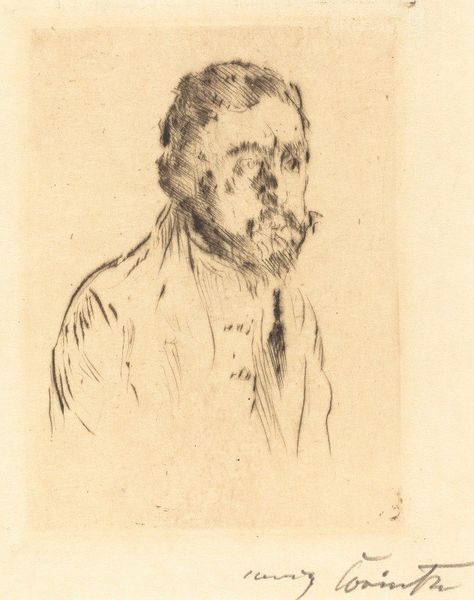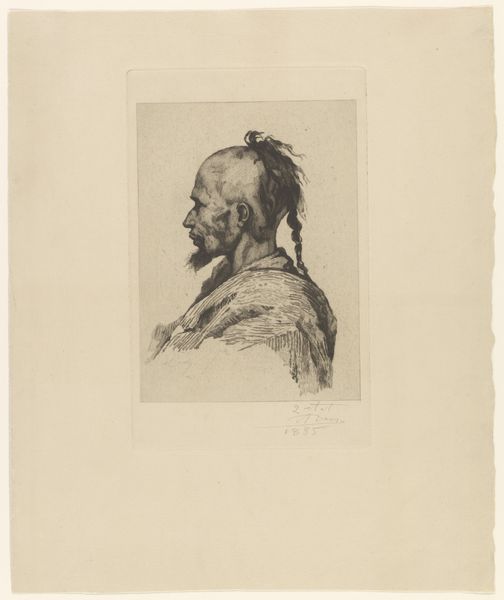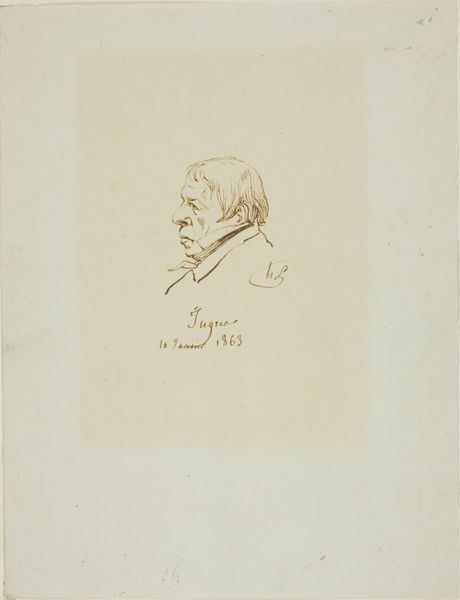
Dimensions: 195 × 150 mm (image/plate); 318 × 224 mm (sheet)
Copyright: Public Domain
Editor: Here we have Pierre-Georges Jeanniot's "Portrait of Degas," an etching from 1891, currently housed at The Art Institute of Chicago. It's incredibly delicate, almost like a ghostly impression. How do you see this piece functioning within its time? Curator: I'm particularly interested in the *process* that gave rise to this etching. Think about the materials Jeanniot employed: the copper plate, the etching needle, the acids, the paper. Each element contributes to the final product. This isn't simply about portraying Degas; it's about the *labor* involved in translating an image through a specific industrial medium. Consider also how printmaking allowed for wider distribution of images, impacting art consumption at the time. Does understanding its materiality alter your first impression? Editor: Definitely. I was initially focused on it just *being* a portrait of Degas. But thinking about the materials used, and the act of creating multiple prints, makes it feel almost like a mass-produced object. Was this considered low-brow then? Curator: The lines were often blurred! Printmaking held a complex position, navigating between 'high art' and commercial reproduction. While portraiture often held elevated status, the *means* of production -- etching as a reproducible medium -- complicates that. Where does Jeanniot, an artist known for his illustrations and genre scenes, fit into this artistic hierarchy? Think about that in relation to Degas's own exploration of unconventional mediums and subjects. Editor: So, it's not just a portrait, it's a document of artistic production itself, caught between fine art and industrial process? I hadn’t thought about it like that at all. Curator: Precisely. And by considering the social context of its creation, we get a much richer understanding of Jeanniot's piece. I am left with new ideas about what art represents! Editor: Me too. I am so glad I was able to learn a new way to read this piece.
Comments
No comments
Be the first to comment and join the conversation on the ultimate creative platform.


